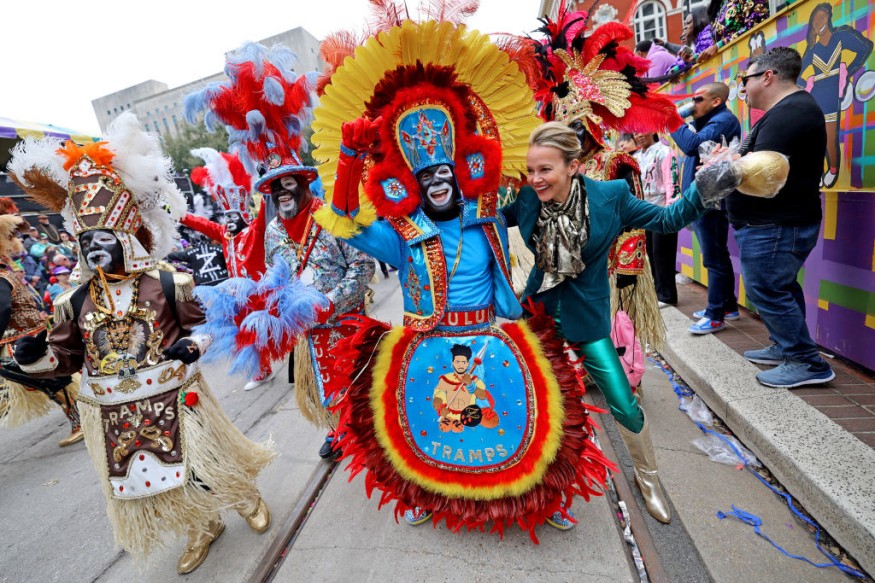Mardi Gras: How Do Latin America and New Orleans Spend Carnival Season?

Amid the grand finale of the carnival season, New Orleans anticipates thousands for the annual Mardi Gras celebration.
Festivities include vibrant parades, historic French Quarter parties, and the Rex Organization's tradition, while actor Kevin Dillon reigns as the Krewe of Bacchus's king.
Despite expected chilly temperatures and strong winds on Tuesday, the Mardi Gras revelry in New Orleans is set to continue.
The enthusiastic crowds, adorned in costumes, eagerly anticipate the coveted "throws," including brightly colored bead necklaces, stuffed animals, plastic cups, and hula hoops.
The festive spirit prevails, undeterred by weather conditions, per ABC News.
Orleans' Mardi Gras epitomizes rich traditions, cultural diversity, and vibrant creativity, captivating both locals and visitors.
The celebrations extend beyond New Orleans, with Mobile, Alabama, hosting the nation's oldest Mardi Gras, while Brazil and Europe showcase renowned Carnival extravaganzas, AP noted.
Monday's festivities included the symbolic meeting of the Kings of Carnival and Zulu, reflecting a shift in social and racial dynamics.
READ NEXT : Mexico City Celebrates Traditional Carnivals
Mardi Gras in Latin America
In Hispanic culture, the festive spirit of Mardi Gras takes on the name Carnaval, a week-long extravaganza that precedes the solemn period of Lent, according to the Spanish Academy.
Let's explore the lively Mardi Gras celebrations across Latin America, where the festivities are known for their exuberance and cultural richness.
Carnival Season vs. Mardi Gras: A Cultural Blend
Originating from the French words "Mardi" (Tuesday) and "gras" (Fat), Mardi Gras refers to the day before Ash Wednesday, marking the commencement of Lent.
Traditionally, it involved indulging in rich, fatty foods before the fasting period of Lent.
The Mardi Gras tradition expanded globally with the spread of Christianity, reaching countries like England, Portugal, Spain, Italy, and the Americas.
While Mardi Gras and Carnival season are essentially the same holidays, cultural variations influence the way they are celebrated.
The term "carnaval" comes from the Medieval Latin word Carnelevarium, meaning "to take away meat," establishing a close connection between the two names of this festive occasion.
Latin American Mardi Gras Celebrations
Similar to the iconic celebrations in New Orleans and Venice, Latin American Mardi Gras is a spectacular blend of traditions brought by European colonizers and the rich cultural tapestry of the region.
Let's delve into the vibrant celebrations of eight Latin American countries.
Colombia: El Carnaval de Barranquilla
Originating in Cartagena with African slaves, El Carnaval de Barranquilla has evolved into a massive celebration welcoming over 300,000 people from across Colombia.
The parade, the second-largest globally, showcases the country's diversity, folklore, and modern art with a unique theme each year.
Mexico: Diverse Celebrations Across Towns
Mardi Gras celebrations in Mexico are diverse and grand. In Mazatlán, the third-largest Mardi Gras celebration globally, festivities include cultural events like La Velada de las Artes and honoring the Mazatlan Award for Literature.
Other Mexican towns, including Oaxaca, Mérida, Veracruz, and Campeche, celebrate with parades featuring costumes representing various ethnicities and indigenous cultures.
Guatemala: Family-Focused Celebrations
In Guatemala, Mardi Gras celebrations center around children wearing costumes and crafting handmade cascarones and colorful eggshells filled with confetti.
The tradition involves cracking the cascarones on each other's heads, creating a festive atmosphere suitable for families and people of all ages.
Venezuela: The Callao Carnival Season
In Venezuela, the largest celebration occurs in El Callao, featuring parades with Calypso music and symbolic characters known as los diablos.
These devils, representing the magical-religious aspect of the festival, were declared Intangible Heritage of Humanity by UNESCO in 2016.
Uruguay: The World's Longest Mardi Gras
Uruguay hosts the world's longest Mardi Gras celebrations, lasting over 45 days. With parades, comedy shows, and costume contests, Montevideo becomes a vibrant hub of music, fantasy, and rich colors, creating a festive atmosphere for locals and visitors.
Bolivia: Altitude and Tradition in Oruro
Located at an altitude of 3,700 meters, Oruro in Bolivia hosts the country's largest Mardi Gras celebration.
The six-day event features a grand parade with over 28,000 dancers and 10,000 musicians, showcasing popular arts through masks, textiles, and embroidery.
Dominican Republic: Playful and Amusing Celebrations
Mardi Gras celebrations in the Dominican Republic are marked by playful elements, including the Califé Show, where politicians and celebrities are humorously caricatured.
Another unique tradition involves hiding candy for children to find, adding a playful twist to the festivities.
Brazil: The Samba Capital of the World
Undoubtedly, Brazil is a Mardi Gras powerhouse, hosting the Carnival season of Rio de Janeiro since 1840.
Renowned for its Samba dancers and world-class dance competitions, Brazil's Mardi Gras attracts millions from around the globe.
The celebration features bright colors, elaborate sequin costumes, delicious food, and spectacular parade floats.
As we explore the vibrant Mardi Gras celebrations across Latin America, it's evident that each country adds its unique cultural flair to this globally cherished tradition.
Whether it's the lively parades, traditional costumes, or the joyous atmosphere, Latin American Mardi Gras exemplifies the region's rich diversity and cultural heritage.
READ MORE : Valentine's Day Traditions in Latin America
This article is owned by Latin Post.
Written by: Bert Hoover
WATCH: What's Mardi Gras all about? - From 10 Tampa Bay
Subscribe to Latin Post!
Sign up for our free newsletter for the Latest coverage!











